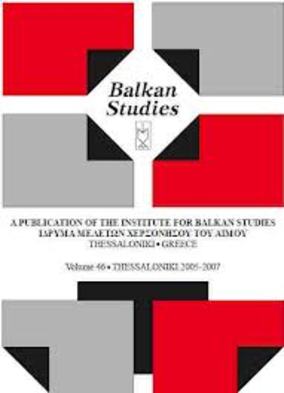Auf den Spuren der Griechen in Györ (Ungarn)
Part of : Balkan studies : biannual publication of the Institute for Balkan Studies ; Vol.38, No.1, 1997, pages 63-100
Issue:
Pages:
63-100
Parallel Title:
On the traces of the Greeks in Gyor (Hungary)
Section Title:
Articles
Author:
Abstract:
The difficult social and financial conditions in the Ottoman Empire at the end of the 16th and the beginning of the 17th century and the military expansion of the Turks to the North brought the balkan population in contact with the Hungarian and Transylvanian territories. The Serbs and Greeks merchants succeded in taking over rapidly an eminent trade-activity; they introduced trade-stations and gradually founded communities, where they were living permanently with their families. The Greek presense in Györ, a town of a great commercial significance, was until now known only due to indirect and scattered information. Some documents, which were discovered during a research in Hungarian und Austrian archives, shed light on the activities of the Greek colony in Györ. The first document (30/4/1744) is an application of the Greek trading company of Györ to the City Council, which arranges the opening-time (time-table) of their stores in the period of orthodox feasts. The analysis of the document shows the structure and the characteristics of the Greek trade-companies, which indicates great similarities not only to the trade companies of that period in Greece but to the Byzantine structures as well.Other documents acquaints us with information about the visiting of a monkpriest from Jerusalem to Györ (6/7/1746) in order to collect alms and his impressions on the Greek community there. Some additional documents dated18th century enable us to reconstruct the relations amongst Greek communitiesin Hungary, their hardships conserning the lack of priests, their salaries and give us some numbers about the orthodox population of Györ. The last mention of the Greek community in Györ is comming from a report of the bishop of Amaseia and Exarch of Middle-Europe Germanos Karavaggelis,who in 1930 visited Györ and verified the dissolution of the Greek community and the closing of the church. Today stand around the recently renovated orthodox church of Györ the cemetery with two Greek tombstones walled in,the greek school and the house of the orthodox priest as witnesses to the Greek presence in the Hungarian town of Györ.
Subject:
Subject (LC):
Keywords:
Έλληνες στην Ουγγαρία
Notes:
Die vorliegende Untersuchung hat im Herbst 1995 stattgefunden und wurde zumgrößten Teil vom Europa-Institut zu Budapest finanziert. Dem Präsident der Stiftung, HerrnDr. Ferenc Glatz, wie auch den anderen Institutsmitarbeitem bin ich zu Dank verpflichtet.Ich bedanke mich auch an dieser Stelle bei Dr. Lajos Gecsényi, Direktor des Komitatsarchivzu Györ, dem hochwürdigen Gality Vojiszlav, Szentendre, dem hochwürdigen ArchimandritenTimotheos Romanas, Wien, und Seiner Eminenz, Michael Staikos, Metropolit vonAustria, Exarch Ungarns und Mitteleuropas für Ihre wichtigen Bemerkungen und Hilfeleistungen.Mein besonderer Dank gilt Dr. Andreas Külzer, Wien für sprachliche und stilistischeVerbesserungen in dieser Arbeit. Zuletzt möchte ich meinen aufrichtigen und tiefsten DankFrau Mag. Judit Santa, Budapest ausdrücken, da ohne Ihre vielfältige Hilfe diese Arbeit kaummöglich gewesen wäre.




